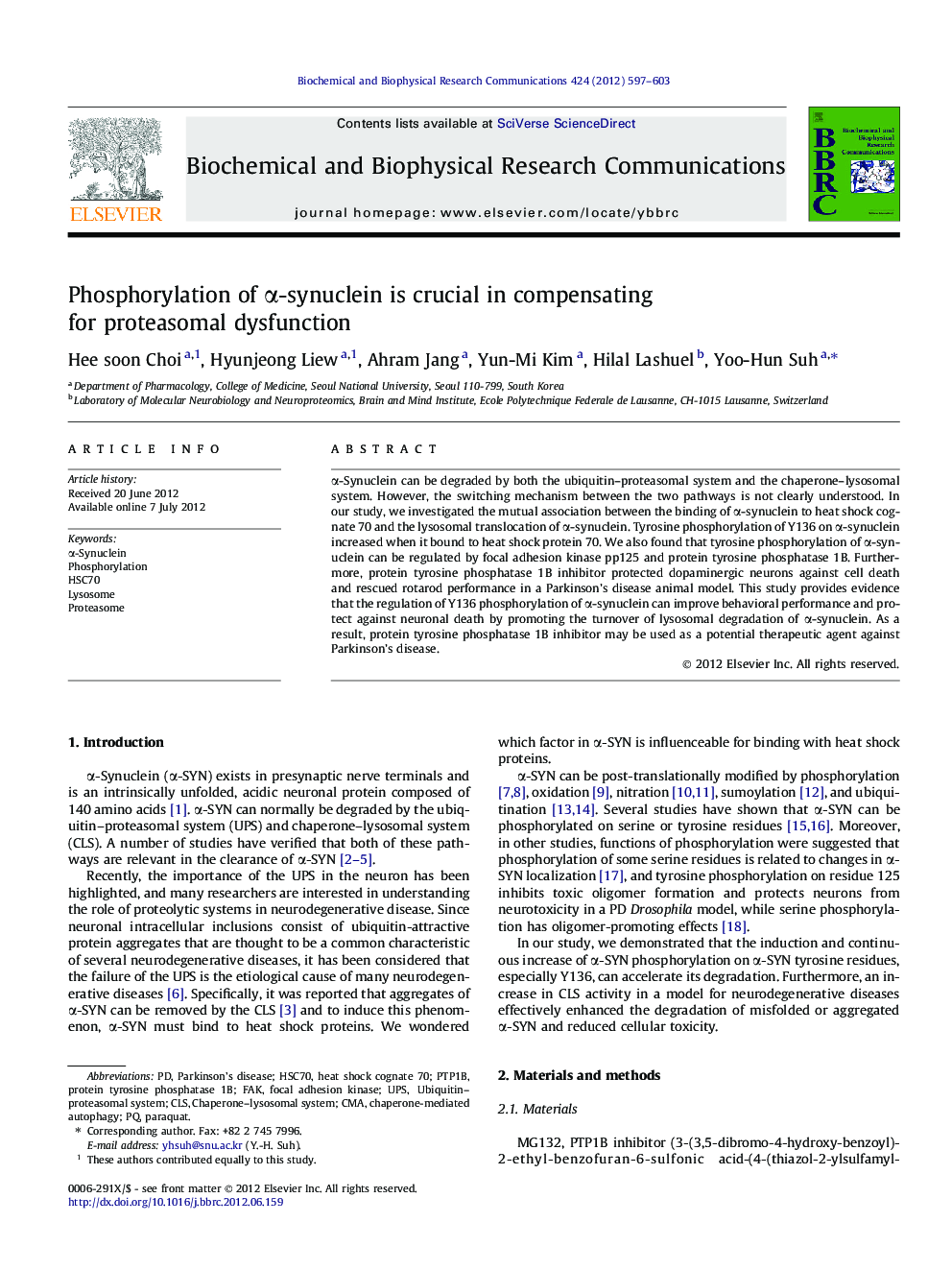| کد مقاله | کد نشریه | سال انتشار | مقاله انگلیسی | نسخه تمام متن |
|---|---|---|---|---|
| 1929344 | 1050452 | 2012 | 7 صفحه PDF | دانلود رایگان |

α-Synuclein can be degraded by both the ubiquitin–proteasomal system and the chaperone–lysosomal system. However, the switching mechanism between the two pathways is not clearly understood. In our study, we investigated the mutual association between the binding of α-synuclein to heat shock cognate 70 and the lysosomal translocation of α-synuclein. Tyrosine phosphorylation of Y136 on α-synuclein increased when it bound to heat shock protein 70. We also found that tyrosine phosphorylation of α-synuclein can be regulated by focal adhesion kinase pp125 and protein tyrosine phosphatase 1B. Furthermore, protein tyrosine phosphatase 1B inhibitor protected dopaminergic neurons against cell death and rescued rotarod performance in a Parkinson’s disease animal model. This study provides evidence that the regulation of Y136 phosphorylation of α-synuclein can improve behavioral performance and protect against neuronal death by promoting the turnover of lysosomal degradation of α-synuclein. As a result, protein tyrosine phosphatase 1B inhibitor may be used as a potential therapeutic agent against Parkinson’s disease.
► Tyrosine phosphorylation of α-SYN increased the binding of α-SYN to HSC70.
► Tyrosine 136 of α-SYN was the most influential to the binding with HSC70.
► Tyrosine phosphorylation of α-SYN was increased by PTP1B inhibitor.
► Tyrosine phosphorylation of α-SYN increased the neuronal survival.
Journal: Biochemical and Biophysical Research Communications - Volume 424, Issue 3, 3 August 2012, Pages 597–603